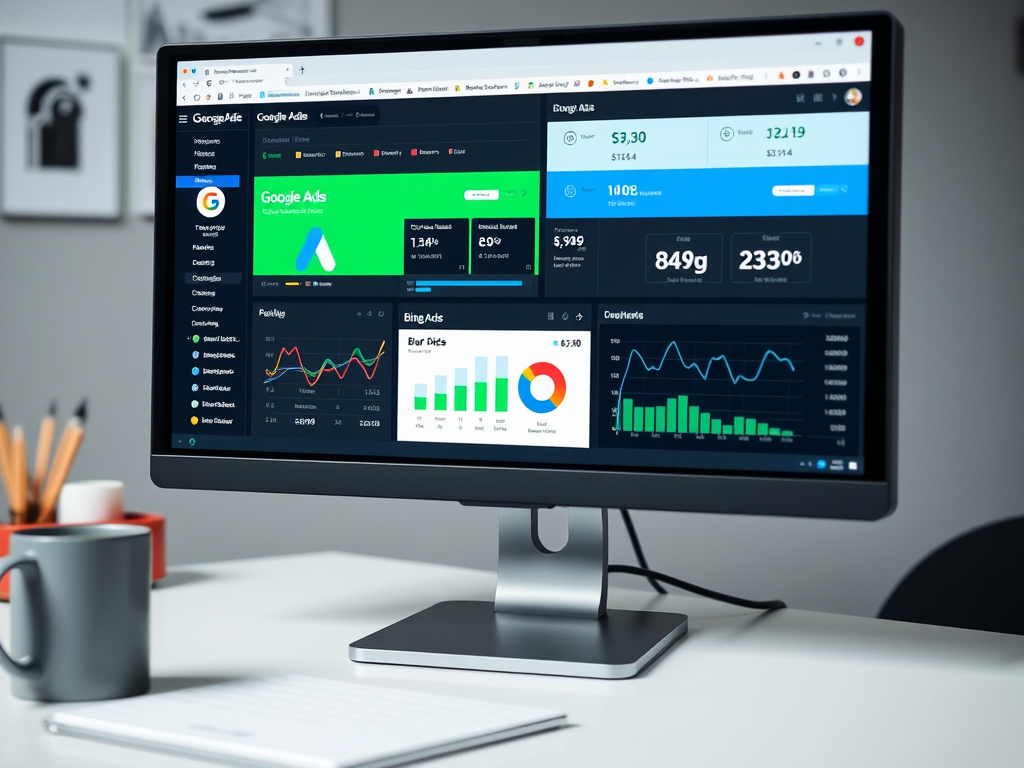In today’s digital landscape, businesses are constantly seeking effective strategies to enhance their online presence. Among these strategies, managing pay-per-click (PPC) campaigns across different platforms has emerged as a critical component in driving targeted traffic and generating leads. With the rise of diverse advertising platforms, it is essential to understand how to navigate each one effectively. This article delves into the intricacies of PPC campaign management, focusing on Google Ads, Bing Ads, and other emerging platforms. By exploring key strategies, budgeting techniques, and performance analytics, you will be equipped to elevate your PPC efforts across multiple platforms.
As businesses venture into the world of PPC, they often find themselves juggling various tools and methodologies. Mastering the art of PPC is not merely about placing ads but involves ongoing optimization and strategic management tailored to each platform’s unique characteristics. The true challenge lies in balancing campaign objectives while maximizing return on investment (ROI). Following the principles laid out here, marketers can develop a comprehensive approach to PPC that engages their audience effectively. This approach not only enhances visibility but also fosters long-term customer relationships.
Understanding PPC and Its Importance

PPC advertising is a highly effective online marketing strategy that enables businesses to purchase visitors to their websites. By using platforms like Google and Bing, advertisers can present their products or services directly to individuals who are already searching for them. This targeted approach not only attracts a ready-made audience but also helps optimize advertising spend. The potential for immediate results is one of the major appeals of PPC, as businesses can witness rapid traffic increase after launching their campaigns. Additionally, with powerful analytics tools integrated into PPC platforms, businesses can adjust their strategies in real-time based on performance data.
Key Components of a Successful PPC Campaign

Successful PPC campaigns rely on several key components that must be meticulously developed and optimized. Critical among these components is keyword research, which allows marketers to identify the terms and phrases their target audience is using in search engines. This research forms the backbone of ad visibility and ultimately impacts click-through rates. Compelling ad copy also plays a significant role in engaging potential customers, creating a unique proposition that captivates their attention.
Keywords Research
Effective keyword research entails leveraging tools such as Google Keyword Planner and SEMrush. These tools help you uncover high-performing keywords that align with your target audience’s intent. Regularly updating your keyword list can significantly enhance your campaign’s performance over time. Ignoring changing trends can lead to decreased visibility and ad fatigue. Thus, it’s essential to refresh your keywords periodically and adopt a proactive approach.
Ad Copy and Creative
Crafting compelling ad copy is paramount to attracting clicks. Your headlines must be catchy and relevant, while descriptions should clearly convey the benefits of your offering. Incorporating calls-to-action (CTAs) can significantly enhance engagement. A/B testing different copy variations will help determine which phrasing resonates best with your audience. Plan to iterate continuously based on performance insights.
| Platform | Unique Features | Target Audience |
|---|---|---|
| Google Ads | Extensive reach, advanced targeting options | Broad audience across demographics |
| Bing Ads | Lower CPC, unique audience segments | Older demographic, higher income |
| Facebook Ads | Visual ad formats, social engagement | Wide range but focused on social users |
Managing Campaigns on Different Platforms
Each PPC platform, while similar in principle, has unique features that require tailored management techniques. Google Ads, the most widely used platform, offers extensive tools designed for optimization, including remarketing options and detailed performance metrics. Meanwhile, Bing Ads may have a smaller audience but could provide a less competitive landscape and lower costs. Optimizing tactics based on the platform can yield improved ROI. Furthermore, integrating social media ads into your PPC strategy opens up even more targeting options, offering visibility on platforms where your audience is already active.
Effective management of PPC campaigns also involves strategic budgeting and bidding. Setting a well-defined budget at the outset is critical to ensure you do not overspend while still allowing sufficient access to ad placements. Without a clear budget, it becomes easy to either under or over-invest in campaigns. By allotting funds based on platform performance and audience engagement, you can maximize your returns. Additionally, various bidding strategies can be employed depending on your campaign goals.
Measuring Performance and Analytics
Monitoring the performance of PPC campaigns is essential for continuous improvement. Key performance indicators (KPIs) such as CTR, conversion rate, and cost per acquisition are vital metrics to track. Each metric provides insights that guide future campaign decisions. Integrating analytics tools can streamline this process, allowing for real-time data access. Familiarizing yourself with the capabilities of these tools, such as Google Analytics, can help you make informed decisions quickly and efficiently.
Many analytics tools can facilitate concise tracking of PPC campaign performance. Using Google Analytics alongside Google Ads provides a more comprehensive view of campaign efficacy. Evaluate these tools to identify trends and anomalies, which helps in adjusting campaigns dynamically. Regular analysis ensures that your strategies remain relevant and effective.
Итог
Managing PPC campaigns across multiple platforms requires a multifaceted approach that combines strategic planning and data-driven decision-making. By diving deep into the unique features and demographics of each platform, marketers can optimize their campaigns effectively. Gaining insights from performance analytics becomes equally important to inform ongoing optimizations. Overall, the landscape of PPC advertising presents both challenges and opportunities, where learning and adapting pave the way for success.
Часто задаваемые вопросы
- What is the difference between Google Ads and Bing Ads? Google Ads typically has a larger user base and more features, while Bing Ads can offer lower CPC and access to a different demographic.
- How do I decide which platform to use for PPC? Consider factors such as your target audience, budget, and campaign objectives to determine the best platform.
- Can I run PPC campaigns on social media? Yes, platforms like Facebook, LinkedIn, and Instagram offer effective PPC options that complement search engine advertising.
- How often should I review my PPC campaigns? Regular reviews, at least once a month, are advisable to optimize performance and adjust strategies based on data.
- What is A/B testing in PPC? A/B testing involves running two variations of an ad to see which performs better, allowing for informed optimizations.
